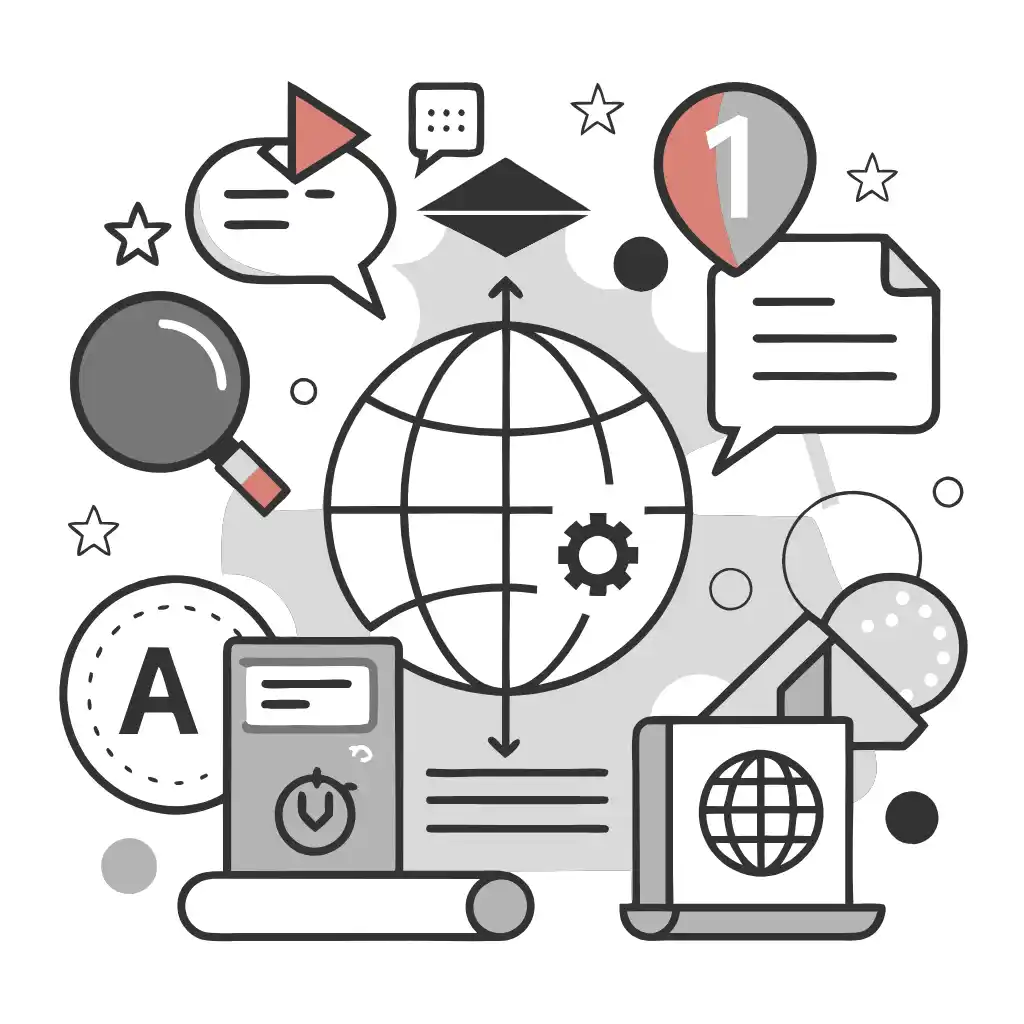DeepL vs. Google Translate: Which Is Better?
The Rise of Neural Machine Translation
In recent years, machine translation capabilities have advanced rapidly, with neural machine translation emerging as the most sophisticated technique. It employs complex deep learning algorithms and artificial intelligence to deliver remarkably high-quality automated translations that often match or exceed human levels.
Neural machine translation works by training multilayered neural networks on massive datasets of bilingual text. By analyzing vast numbers of professional human translations, the machine learning models can deduce patterns, grasp rules, comprehend linguistic nuances, and determine optimal ways to translate text between any language pair.
Two of the leading services leveraging cutting-edge neural networks are Google Translate and DeepL. Google Translate taps into Google’s proprietary neural engine to translate text into over 100 languages with impressive accuracy. DeepL intensely focuses on precision translation as a competitive advantage. It trains highly optimized neural networks on gigantic databases of bilingual text from institutions like the United Nations, enabling DeepL to handle even subtle nuances with precision.
The constant advancement of machine learning algorithms and growth of training data continues to drive rapid improvements in automated translation capabilities. Neural networks now enable businesses to cost-effectively translate content at scale while maintaining high quality. This unlocks new opportunities for organizations to engage in global markets by localizing their online presence.

Key Differences Between DeepL and Google Translate
At a high level, while Google Translate offers wider language support and greater public visibility, DeepL stakes its reputation on delivering greater overall translation accuracy and quality. Independent third-party evaluations have found DeepL to significantly outperform Google Translate in head-to-head tests evaluating translations from English into languages like German, French and Spanish.
This advantage likely stems from DeepL’s singular focus on perfection rather than scope. The company seems to have optimized every aspect of its neural networks to squeeze out the highest quality results for language pairs it supports, rather than pursuing a larger but potentially diluted training approach across 100+ languages like Google.
Both DeepL and Google offer broadly similar customer support options like online knowledge bases, community forums and paid enterprise plans with enhanced capabilities. DeepL has a minor edge in the consumer space by offering a standalone desktop application for Windows and Mac, whereas Google Translate is primarily web and mobile-based. However, for most use cases, the two market-leading options appear broadly comparable in features and functionality, with DeepL having devoted optimization effort specifically towards precision machine translation quality. This gives it an edge for users focused principally on accuracy.
Choosing the Right Machine Translation Approach
Determining the ideal machine translation solution for a particular business depends greatly on their specific needs and priorities. For common language pairs like English to Spanish, French or German, DeepL certainly appears to have an accuracy advantage based on conducted studies. However, for more niche language pairs, Google’s support for over 100 languages gives it the upper hand.
Rather than locking into only a single provider, the most prudent strategy is adopting a flexible, hybrid approach that combines multiple technologies. For website translation, platforms like ConveyThis exemplify this philosophy by seamlessly incorporating a diverse mix of leading neural translation engines, including both DeepL and Google Translate in addition to Microsoft Translator and Yandex. Based on the unique requirements of each language pair and content type, ConveyThis dynamically determines and selects the optimal engine most likely to deliver the best possible translation accuracy and result. This customizable, conditional approach allows benefiting from each technology’s relative strengths while minimizing weaknesses through specialization.


The Key Benefits of ConveyThis for Websites
As an automated website translation platform, ConveyThis offers several unique advantages: Seamless integration with all major content management systems and platforms including WordPress, Shopify, Wix and more. This avoids complex custom software development. Automated translation of entire websites, not just standalone text. The solution crawls and extracts all text content from pages for localization. Review and editing capabilities to refine raw machine outputs through human post-editing based on priorities. API access to professional human translation services for both automation blending and specialist needs. Automated implementation of multilingual SEO best practices including URL structure, hreflang tags and search engine indexing. Ability to visually preview translated pages within the platform dashboard to validate content integrity. Collaboration tools like user roles and permissions to facilitate teams and external translators helping manage website localization. Continuous engine improvement monitoring and translation quality testing to ensure optimal results over time.
This strategic fusion of diverse neural machine translation technologies supplemented by human translation allows delivering professional yet cost-effective website localization capabilities.
Success Stories and Use Cases for ConveyThis
Here are a few real-world examples highlighting the impact ConveyThis has delivered for customers translating their websites: A European e-commerce site selling luxury apparel and accessories used ConveyThis to translate their catalog of over 150 complex products into 3 languages. The entire process took less than 15 days from integration to go-live. International website visits subsequently increased over 400%. A global SaaS company with a substantial knowledge base of technical support content and weekly blog updates from subject experts was spending 4+ hours per week manually translating articles. By implementing ConveyThis, they reduced translation process time down to 30 minutes while increasing output volume. A leading European luxury fashion brand wanted to expand traffic to their online magazine targeting German readership. After integrating ConveyThis and automating translation of new articles, they saw a 120% increase in German blog traffic within 2 months.
The diverse use cases and verticals underscores how website localization through automated machine translation can deliver tremendous value across industries by connecting with foreign audiences.

Expert Recommendations for Maximizing Machine Translation Success
While today’s top machine translation services make achieving quality at scale possible, thoughtful processes and strategy remain vital for maximizing impact. Here are key expert recommendations when implementing automated translation: Begin by ensuring a solid foundation of high-quality human translations for at least 30-50 core website pages per language. This provides neural engines essential training data for adapting to your site’s terminology and style. Phase language rollouts in a graduated manner based on data-driven business priorities and volume of human-translated pages ready. Certain markets may merit focused initiation. Consult multilingual SEO best practices and implement key optimizations like hreflang tags from the outset for indexation. Continuously expand human-translated pages in targeted languages to improve machine accuracy through ongoing training. Monitor analytics to identify engagement levels and ROI by language to guide investment. Let data inform priorities. Refine processes for requesting and managing human translation to focus effort on high-value pages. Seek optimization. Use both human and automated quality checks to validate output. Implement corrections loop.
With the proper strategic foundation and workflows in place, machine translation becomes a scalable asset that radically accelerates launching localized websites and content.
The Future of Machine Translation Technology
While already highly capable today, machine translation solutions will inevitably continue advancing and improving in coming years as research progresses. Some key innovations on the horizon include: Increased contextual awareness beyond text. Instead of just analyzing documents, engines may incorporate real-world knowledge and metadata to improve comprehension. Even more accurate handling of linguistic nuances like sentiment, tone and implied meaning through greater sophistication.
Expanded support for less common niche languages by training systems on broader data derived from sources like Wikipedia volunteer translations. Stronger performance and specialized proficiency in high-value domains like legal, medical and technical writing through focused datasets. Tighter integrations with multimedia content, conversational interfaces and speech translation driven by demand growth in video, voice and IoT. Enhanced integration into creative workflows through easy-to-use editing tools for faster human hybrid review.
However, for most practical business use cases today, neural machine translation has already matured sufficiently to deliver exceptional value and ROI for multilingual website localization. With proper implementation, the technology is fully capable of driving significant international growth and opportunity through engagement with foreign audiences.

Conclusion
In summary, today’s top neural machine translation services like DeepL and Google Translate provide a proven means for companies to cost-effectively localize websites at substantial scale. By embracing automated translation, organizations can finally tap into the enormous potential demand from non-English speaking internet users worldwide.
Translation, far more than just knowing languages, is a complex process.
By following our tips and using ConveyThis , your translated pages will resonate with your audience, feeling native to the target language.
While it demands effort, the result is rewarding. If you’re translating a website, ConveyThis can save you hours with automated machine translation.
Try ConveyThis free for 3 days!
 No card details
No card details